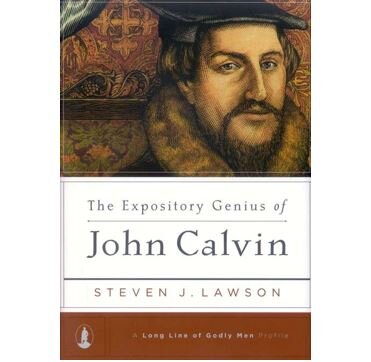Expositor Steven Lawson provides a valuable service in giving a quick snapshot look at the expository sermon style of John Calvin. His intent is to continue this series of “long Line” Profiles on Martin Luther, George Whitefield, Jonathan Edwards, Charles Spurgeon and others. Many of us have read historical accounts of Calvin’s life or even seen re-enacted movies of the events surrounding his life and ministry. But here we get exposed to his approach to preaching. His sermons were directed more to the common man in simple, direct language — as opposed to his more complicated exegetical work in his published commentaries and theological treatises. This short summary treatment has encouraged me to seek out some of his sermon material. Maybe I can add some of his quotes to my earlier works on 1 and 2 Samuel.
It is always an encouragement to see how God used the expositional sequential treatment (lectio continua) approach to bless so many people in this crucial foundational period of the Reformation. Lawson calls for a return to such a God-centered focus on the part of modern day preachers. He highlights 32 distinctives of John Calvin’s pulpit ministry in which the Word of God was elevated to the central focus. Some of the nicknames applied to this giant of the Reformation were certainly appropriate. He was called siimply “the theologian” by Philip Melanchton and “the accusative case” by others who noted his propensity for argumentation.
I liked the story of how he just picked up where he had left off in his preaching when he returned to Geneva. It was impressive to see how he took no notes up into the pulpit but preferred an extemperaneous delivery (not in any way to be confused with spontaneity of preparation). He died at the age of 54 — interesting since that is my current status. Length of years will be the only leg up I will have on this scholar. He certainly didn’t pull any punches when it comes to calling out the Roman Catholic clergy for their various errors. He faithfully held to all of the key sola doctrines — especially keying on the supreme authority of the Scriptures.
He also struck a chord with me by adopting a Big Idea approach to stating the theme of each passage he tackled. “In his introduction, Calvin also often disclosed his stated proposition for the sermon. Sometimes called the thesis statement or main claim, such a proposition announces the essence of the message in a succinct form. Because of this practice, there was rarely any doubt about what Calvin’s message would address.” (p. 60) But he is probably best know for his exegetical precision in the handling of the text. Rather than following some type of clearly defined outline, he provided more of a seamless flow of thought with obvious transitional phrases and linkage. He used cross references and quotations sparingly and kept the attention of the audience focused in on the text at hand. Despite his superior intellect and impressive education, he took a very direct and simple approach to drive home his points. (“Calvin will never speak the original Greek word and will rarely refer to the Greek.
His example is certainly an admirable one to follow.

